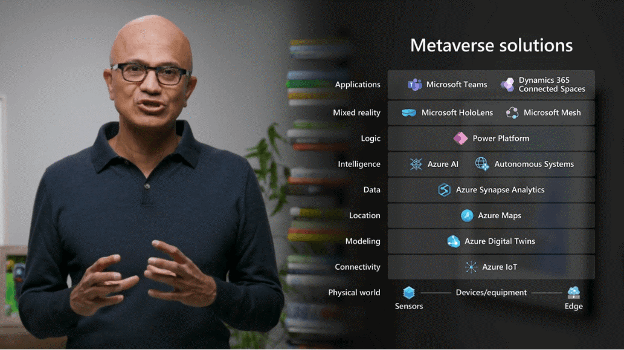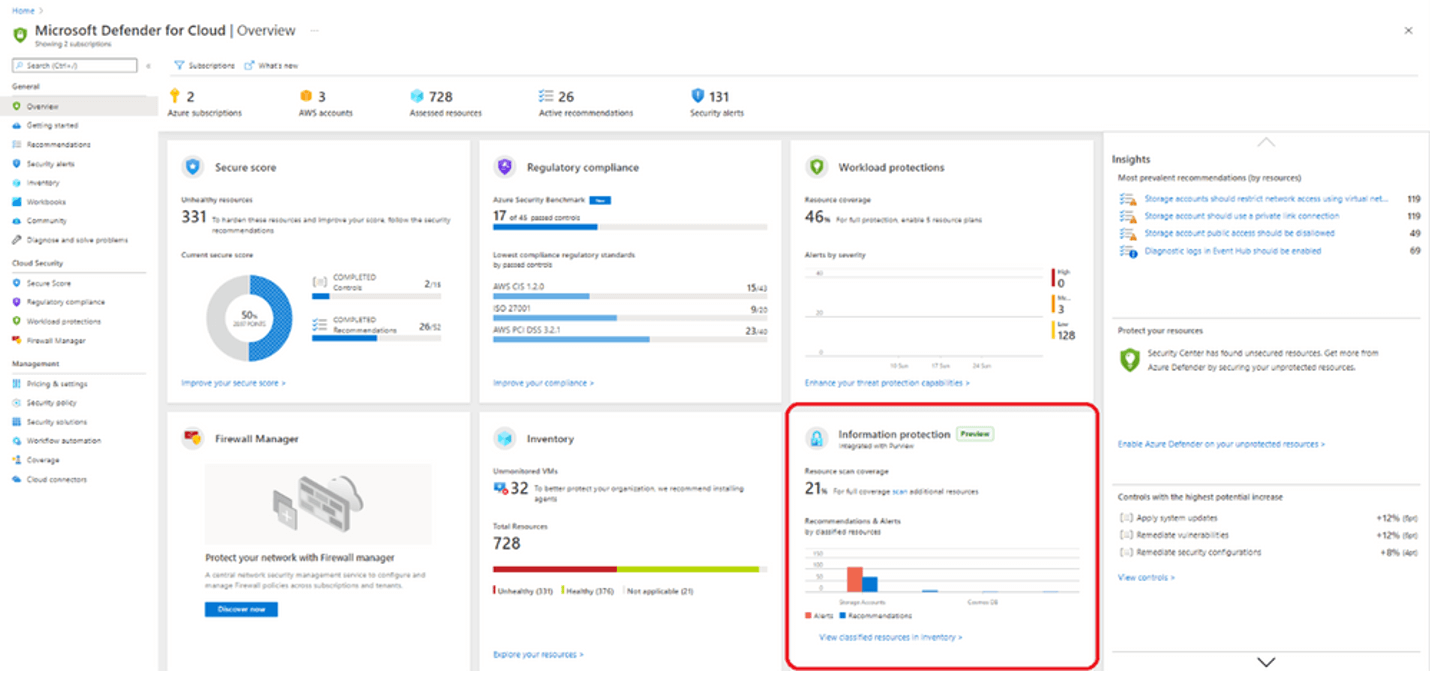Microsoft Ignite 2021: Blog Recap of the Latest Microsoft Cloud & Azure Innovations
Microsoft Ignite was just as jam-packed with new announcements as we expected it to be – if not more. Once again, this conference was held virtually and took place November 2-4, with many of the keynote sessions now available on-demand. Centrilogic followed the event and its announcements and wanted to share some of the developments that caught our attention.
The keynote by Microsoft CEO Satya Nadella offered an inspiring high-level look at Microsoft’s newest products and the company’s vision for the future. Nadella stated that this year’s Ignite would feature a total of 90+ updates and include 100,000 global attendees.
Nadella also focused on the topic of metaverse solutions, during which he was animated in discussing the possibilities and applications of this platform. This technology allows users to collaborate as 3D digital avatars in workspaces – both physical and virtual. He explained that he “can’t overstate how much of a breakthrough” the metaverse is. In this short video, Nadella describes this and why he feels the metaverse is so important.
While there were many new offerings announced across the Microsoft solutions portfolio, the focus of this recap is predominately on those related to the Microsoft Cloud and Azure.
Microsoft Cloud and Azure
While there were many interesting developments about Microsoft 365, Dynamics 365, Power Platform, AI, and more at Ignite, the underpinning of nearly all the developments and news at the event was the Microsoft Cloud – which powers digital capabilities while keeping data secure.
One of the sessions we found particularly interesting was “Innovate Anywhere from Multicloud to Edge,” led by Scott Guthrie. This session spotlighted a litany of new developments on the Microsoft cloud. Guthrie provided a bold, overarching review of just how far Azure has come, as he stated that users can now use the Microsoft Cloud in more than 60 data center regions around the world — more regions and locations than any other cloud provider, according to Guthrie. He also noted that the Microsoft Cloud has the richest in-country data residency support of any cloud provider, stating, “The Microsoft Cloud helps organizations achieve their digital capability needs, all while ensuring data compliance and data sovereignty.”
There were three main areas Guthrie addressed as topics of advancement and new capabilities that were particularly interesting. These included:
- Hybrid and Multicloud
- Unified Data and Governance
- Cloud-Native and Developer Enabling Technology.
Microsoft has been making significant investments in these three areas of the cloud, and the announcements coming out of Ignite demonstrate this commitment and vision.
Hybrid and Multicloud
One of the key Microsoft services for tying together hybrid and multicloud worlds is Azure Arc, which was introduced at last year’s Ignite Conference. The Azure Arc service makes it possible for customers to use cloud services in a consistent way leveraging consistent identity management, servers, applications, databases, and more — regardless of where they reside. This hybrid and multicloud platform is a key Microsoft offering that extends Azure management via APIs that provide a range of features that work in any environment – including on-premises, multicloud, and edge locations. During Ignite, Microsoft announced that Azure Arc now works on VMware vSphere, which allows for full management of these VMware environments utilizing the Azure management portal. In addition, Microsoft highlighted Azure Data Services that make available additional security and governance capabilities through Azure Arc.
This drive to provide an integrated and consistent platform to manage across estates in a data portfolio led to the announcement of Azure Synapse Analytics. This new service brings together the worlds of data integration, enterprise data warehousing, and big data analytics into a single integrated data service. Azure Synapse has experienced significant adoption with a 350% increase in consumption year over year, and Microsoft stated that customers are now performing over 20 million queries per hour against it.
Microsoft also unveiled the preview of the next version of SQL Server. Microsoft touts SQL Server 2022 as the most cloud-enabled release of SQL Server with built-in DR with Azure and “bidirectional” flexibility between on-premises and cloud services. This allows analytics to be performed by Azure Synapse Analytics in the cloud while the database can reside on-premise, completing the Hybrid model.
Guthrie noted that Microsoft continues to see accelerated adoption of cloud services for data analytics and that there are three core capabilities required — a database platform that offers scale, an analytics platform for insights, and unified data governance.
Governance
Microsoft’s focus on providing data and cloud governance was a key theme across many talks at Ignite. The company announced that Microsoft Azure Purview was generally available starting September 28, 2021. You may recall Purview was announced in Preview mode at a previous Ignite. Azure Purview is a unified data governance SaaS service that helps customers govern and manage on-premise, multicloud, and SaaS-based data. The service creates maps of a data landscape with auto data discovery, classification, and end-to-end data tracking. The service is already providing customers strategic insights into their data across platforms in an integrated and secure manner.
Cloud-Native
No doubt, the best way to take advantage of what the cloud has to offer is to develop cloud-native applications. Cloud-native applications can utilize the scale, performance, services, and reliability of the cloud platform. A significant emphasis during Ignite was on Microsoft’s investments in tools that help developers build apps for the cloud. One of these was Azure Container Apps – their newest cloud-native offering.
Container Apps enables developers to build container-based microservices with just their app code, giving them the flexibility to choose to upgrade to the full Azure Kubernetes Service (AKS) at a later time. Azure Container App is one service that helps developers deliver with more speed, and with tools like GitHub, Visual Studio, and Power Apps in combination with Azure, this tooling can help advance developer velocity. New improvements in GitHub are also key to this strategy. GitHub Code Spaces allow for a developer to spin up a complete testing environment with a click of a button — a full isolated developer matching provisioned space with code cloned in “under 15 seconds.” These are secure, container-based environments hosted in Azure with fast performance and can automatically shut down after the developer stops using them. These types of built-in cost controls have been a big ask from Centrilogic’s customers, so it’s great to see Microsoft develop this service.
Another new service that marries AI with cloud-based developer productivity is appropriately named GitHub Copilot. GitHub Copilot provides an AI-powered pair programmer that can help a developer code. This tool has been trained on “billions of lines of code” to help save time in development by having a context-aware coder providing support and help with repetitive tasks, even adopting to a coder’s style as it learns. The service is in technical preview as of the announcement at Ignite.
Security
Another session of particular interest was entitled, “Protect Everything with End-to-End Security,” with Vasu Jakkal, the CVP of Microsoft Security. One of the big announcements coming out of this session was the introduction of Microsoft Defender for Business. This service is targeted to small and mid-sized businesses (up to 300 employees) to help with the rising threats of cyberattacks. This new endpoint security solution was announced in preview mode as coming “soon.” The service is taking an enterprise-grade offering and optimizing it for the SMB market. Defender for Business elevates security from traditional antivirus to next-generation protection, endpoint detection and response, threat and vulnerability management, and more. It offers simplified configuration and management with automated investigation and remediation. Defender for Business helps protect against cybersecurity threats including malware and ransomware across Windows, macOS, iOS, and Android devices. Microsoft Defender and Azure Sentinel were also enhanced for security and multicloud capabilities including for AWS environment support. This allows central management of security across cloud environments. Microsoft has also continued the trend of making more services supporting cross platform, and this includes announcing Microsoft Endpoint for Linux.
Microsoft also announced that Azure Security Center and Azure Defender are now unified as Microsoft Defender for Cloud. The integration of these services under one “roof” provides more seamless management and alignment between services. This integrated platform provides unified governance with insights into customer environments and enables new ways to prioritize and centralize security issues. In addition, Microsoft announced the general availability of Microsoft threat and vulnerability management as a new vulnerability assessment provider. This Microsoft service allows frictionless onboarding for existing and new server workloads so customers can detect vulnerable software without the need to install additional agents. This simplifies provisioning and automates protection capabilities.
As you can imagine, there were so many new services and announcements at the Microsoft Ignite conference that we couldn’t quite cover them all in this recap. However, by focusing on those related to the Microsoft Cloud and Azure, we’re able to provide our insights on the key themes and new offerings that are being launched and delivered in this space. We also encourage you to check out the Microsoft Ignite “Book of News.” This resource is a guide to all the news coming out of the conference with an interactive table of contents allowing for deeper dives on many topics. If you are interested in learning more about any of our cloud services, please feel free to reach out to us at Centrilogic. We are a long-time Microsoft partner and in a prime position to discuss these services and options to see which may help your business.

